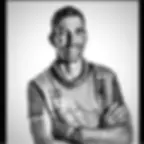Bringing Adventure Racing to Youth
- Barb Bryant
- May 3
- 4 min read

I met Jesse Tubb at a recent Experiential Education conference in Williamsburg, Virginia. My co-presenter, Erkan Sezgin, and I went out to select control locations for our workshop’s Score-O exercise, and found that there were already orienteering flags in some good locations! It turned out that Jesse was giving a workshop at the same time as us. He was talking about his mini adventure races, where participants navigate to checkpoints and take on challenge activities.
Jess’s workshop was called “Micro-Experiences and Adventures: How to pivot your programs post-pandemic”. His workshop description stated: “By reimagining what adventure means and creating micro-experiences in neighborhood parks and utilizing local natural resources, we can bridge the gap between screen-dependent youth and the natural world.” We at Navigation Games agree!
Jesse and I got to talking after our workshops, and I was struck by the depth of his expertise in using outdoor adventure to build resilience, teamwork, and other life skills.
Jesse was in the US Army for 28 years before founding GRIT Adventures, “an experiential learning outdoor program that utilizes adventure racing as a vehicle for teaching valuable life skills.” He has a ton of useful credentials and experience in coaching mindfulness, mental fitness and resilience.
We talked a lot about administrative aspects of running outdoor programs, starting with safety. In some forest adventures, he requires that each team have an adult chaperone, being careful not to have parents chaperone their own kids. With other groups, he’ll station chaperones in safety zones and coach them on how to engage with teams: asking questions without doing the navigation for them. Jesse gives each team a walkie-talkie for communication about emergencies or when they feel very lost. They have to be taught about when to use it - otherwise, it becomes a trash-talking tool between teams. He has used GPS trackers for some 3-hour races, but that can get expensive; the main goal was so that parents could spectate and see how their kids were doing. The software isn’t amazing; there is a lag so he has to train the parents on interpreting the displayed locations. I told him that we like asking participants for intention sheets (what route they plan to take as a list of checkpoint codes), both to help us plan search and rescue operations, as well as to force the team to make a plan together.
When Jesse works with sports teams, he typically runs an activity that is similar to Navigation Games’ team Score-O. We talked about what you pack into the instruction in the beginning, and how you get key points across. He gives a brief introduction to the map, taking time to check that everyone can read and orient a simple map of where they are. He then has the whole group walk together to a couple example checkpoints. He frames the social and team aspects by saying that the intention is to push them outside their comfort zone, taking on an adventure challenge they’re not familiar with. He talks about leading but also stepping back to let others lead - which could mean leaving your comfort zone. Jesse then suggests team member roles like “sherpa” (carries a heavy pack), “rabbit”, “navigator”, captain”, “cheerleader”, and elicits conversation about the value and strengths of those roles, and how to support those who take in each role. Often he’ll suggest more roles than there are team members so people carry multiple responsibilities, and he’ll encourage switching roles partway through, if desired.
He gives a few minutes for the team to decide their initial plan. During that time he pulls the chaperones aside to give them their directions (don’t intervene in the navigation; instead, ask questions). He emphasizes safety bearing and cues about the boundary of the area used. Chaperones typically help with time management because kids typically don’t keep track of time well.
Jesse adds extra challenges at 3 of the 10 checkpoints. For example, some of the team put together a puzzle while one team member holds a plank. When the plank fails, the whole team has to run a penalty lap before starting up again on the puzzle, with a new person planking. All of these challenges serve as food for thought and conversation about how the team communicates, supports each other and works together. There is no shortage of metaphors for transferring lessons learned to one’s life. Did you find a peaceful and collaborative solution to a challenge? What would that look like at home, or at school, or on the playing field?
He finds that even though it is a big challenge, even the younger kids (age 9) are able to navigate reasonably well. He finds that one team out of ten will get lost and need some help. A small percentage of the teams find all 10 checkpoints.
Recently, Jesse has leaned into using maps as a metaphor for how we look at the world. He has a number of cool activities with maps and other props to explore this. He uses these in his series of workshops for profession development, and for people in the grief community. His interest is in developing emotional resilience through metaphors about our mental maps, how they overlay on and affect our interpretation of reality, and how we can shift the maps we use of our lives.
All in all, it was useful and inspirational to talk with Jesse, and wonderful to meet a practitioner of using orienteering to help people develop as human beings!
To find out more about Jesse’s work, check out www.grit-adventures.com, jessetubb.com, and the Tragedy Assistance Program for Survivors (TAPS).

